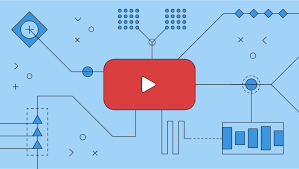The YouTube algorithm is a complex system that determines which videos are recommended to users and how they are ranked on the platform. The goal of the algorithm is to help users discover content they will find interesting or engaging, thereby increasing user satisfaction and time spent on the platform. The algorithm is driven by a combination of factors and evolves over time. Below are the main components and considerations that make up the YouTube algorithm:
1. User Engagement Signals
YouTube’s algorithm takes into account how users interact with content. These interactions include:
- Watch time: How long users watch a video. Longer watch times are a signal that the content is engaging.
- Likes, dislikes, and comments: These actions indicate user engagement and interest in the video.
- Shares: Videos that are shared across social media platforms are often deemed more valuable.
- Subscribers: If a user subscribes to a channel after watching a video, it signals strong interest in that content.
- Click-through rate (CTR): How often users click on a video after seeing it in recommendations or search results.
2. Video Content and Metadata
YouTube also looks at the content of the video itself to understand what it is about and how it should be categorized:
- Title, description, and tags: These elements help YouTube’s algorithm understand the video’s topic and make it discoverable in searches and recommendations.
- Thumbnails: Engaging thumbnails can increase the click-through rate.
- Transcripts and captions: YouTube uses text analysis to understand video content better and match it to user interests.
3. User Preferences and Personalization
YouTube tailors its recommendations to individual users based on:
- Search history: What users have searched for and watched in the past.
- Watch history: What videos users have watched, liked, or commented on before.
- Demographics: Information like age, location, and language can help YouTube deliver more relevant content.
- Subscriptions: Channels a user is subscribed to are prioritized in their feed.
4. External Signals
The algorithm also takes external factors into account:
- Trending Topics: Videos related to current events or popular trends are more likely to appear in recommendations.
- Social Media Mentions: Videos that are being talked about on social media can gain more traction on YouTube.
- Cross-platform interactions: If a video is shared or linked to from other platforms (like blogs or news sites), it can receive a boost.
5. Watch History and Session Time
YouTube aims to keep users on the platform for as long as possible. The algorithm not only considers the performance of individual videos but also how they contribute to longer viewing sessions:
- Session time: The total time users spend on YouTube during a session. YouTube tries to recommend videos that will keep users engaged for longer.
- Diverse recommendations: It balances showing videos from subscribed channels and those that users may not have seen yet, encouraging exploration.
6. Machine Learning and Deep Learning
YouTube uses advanced machine learning algorithms to process massive amounts of data and continuously improve its recommendations. These algorithms are designed to predict which videos will be the most relevant and interesting to each user, based on patterns and behaviors observed in millions of users. This includes:
- Recommender system: Based on data from user interactions, YouTube tries to predict what videos will lead to longer viewing sessions.
- Deep learning models: These models analyze vast amounts of data, such as user behavior and content features, to make real-time predictions about video relevance.
7. Quality Signals
YouTube evaluates the quality of videos to determine whether they should be promoted:
- Video resolution and production quality: Higher-quality video (e.g., 1080p, 4K) can be favored.
- Video longevity: Older videos that continue to perform well may be recommended.
- Spam and clickbait detection: Videos that use misleading titles or thumbnails may be penalized, and YouTube may de-prioritize them.
8. Adherence to Guidelines
YouTube has policies to ensure content adheres to community standards. Content that violates these policies (such as hate speech or misinformation) will be suppressed or removed.
Key Areas of YouTube Algorithm:
- Search: When users search for something, YouTube uses ranking factors like relevance, video quality, and watch history.
- Homepage: This section is driven by a user’s watch history, subscriptions, and trending content.
- Recommendations: YouTube suggests videos in the sidebar, “Up Next,” and notifications based on user behavior and video performance.
Summary
The YouTube algorithm is primarily designed to maximize user engagement by offering personalized content based on past behavior and preferences. It uses a variety of signals like watch time, clicks, comments, and the content’s metadata to recommend videos. Over time, the system learns and adapts to improve recommendations.



